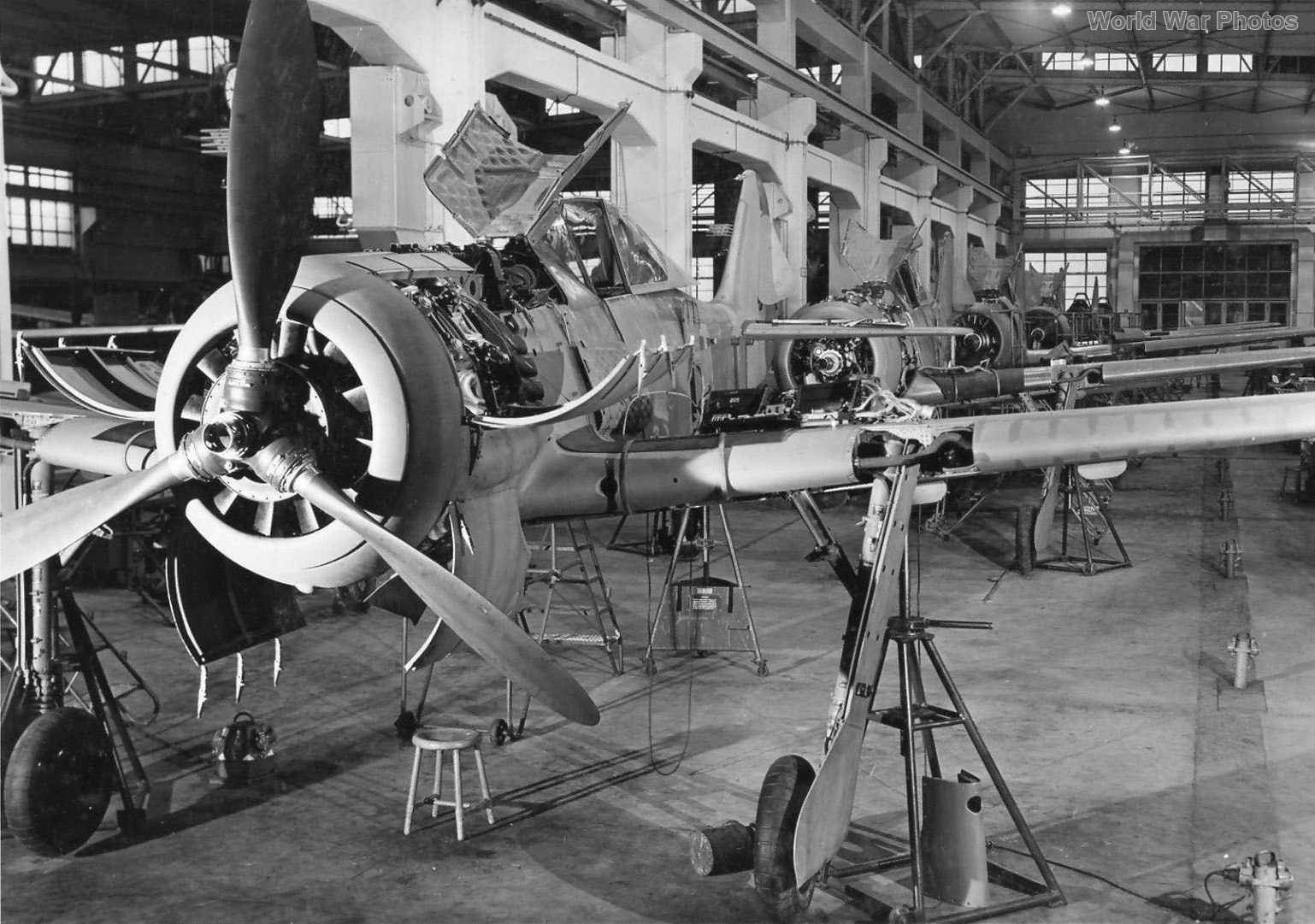As the Fw 190 A-1 series was being deployed to combat units, production of the Fw 190 A-2 variant began in mid-1941, following an order for 315 units by the RLM (Reichsluftfahrtministerium). Due to the large volume of this order, Focke-Wulf had to license production to other manufacturers, specifically AGO-Werke in Oschersleben and Arado in Warnemünde.
The Fw 190 A-2 closely resembled its predecessor, the A-1, but incorporated several minor improvements. The V14 prototype, equipped with a BMW 801C-1 engine, was used as the basis for this new series. However, the A-2 was powered by the enhanced BMW 801 C-2 engine, which offered improved performance. One notable feature added to the A-2 was a scaled rod indicator on the upper wing surface, which visually displayed the position of the landing gear—protruding when extended and retracted into the wing when not.
Additional refinements included reinforced engine cowling secured with push-type safety clasps, and a more efficient cooling system, thanks to a better fan provided by BMW. The canopy was also updated to be jettisonable using small detonating charges, enhancing pilot safety in emergencies.
In terms of armament, the A-2 was equipped with two MG 17 machine guns mounted over the engine and two MG 151 cannons in the wing roots. It also had the option to mount two MG FF cannons in the outer wing positions. This increased the aircraft’s takeoff weight significantly, up to 3850 kg.
Deliveries of the Fw 190 A-2 began in October 1941 and continued until July 1942. The aircraft were outfitted with pylons for bombs or drop tanks, as well as the FuG 7 radio and FuG 25 IFF system. Notably, one Fw 190 A-2/U-1 (Werknummer 0315) was tested with a Patin PKS autopilot, a valuable feature for maintaining formation flight in cloud cover.
